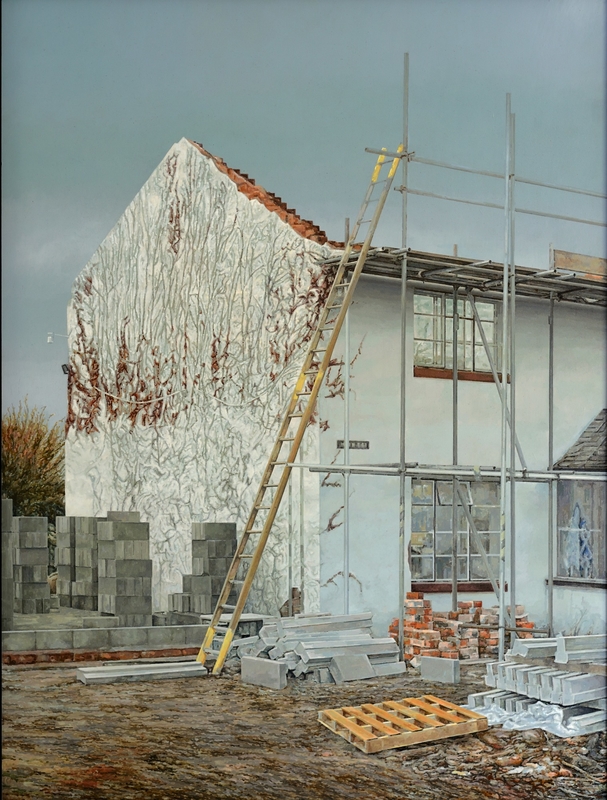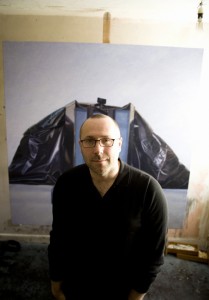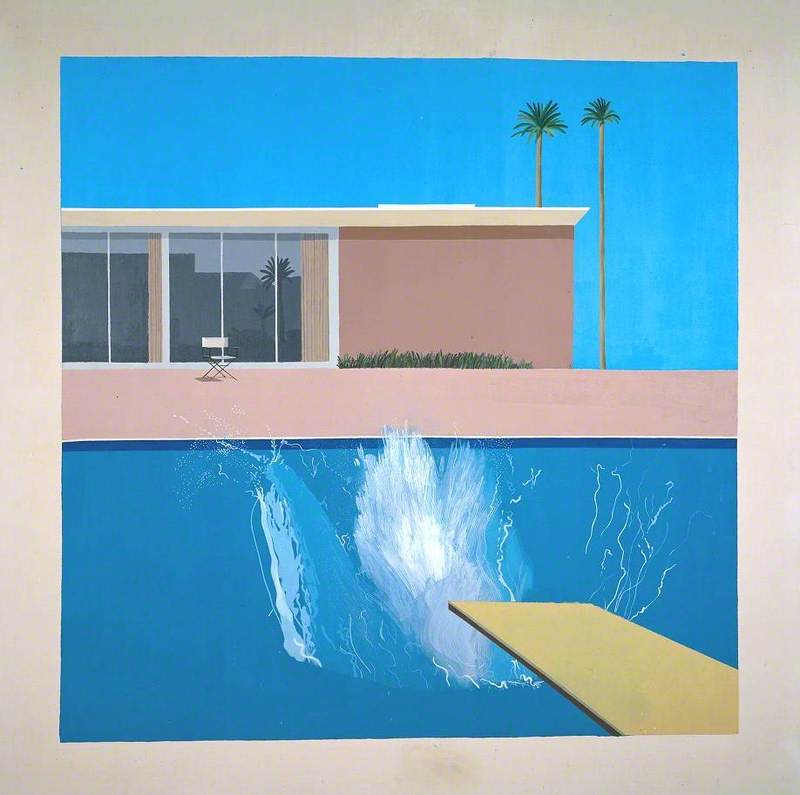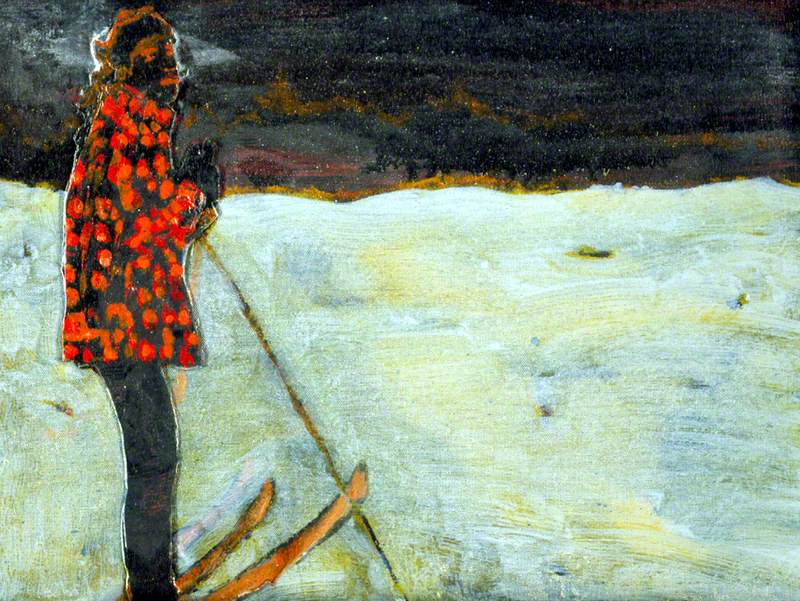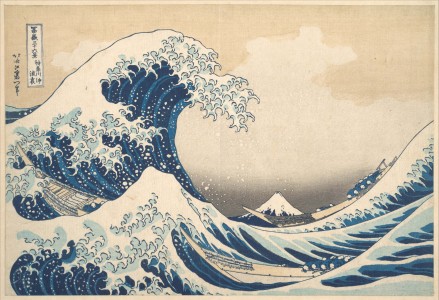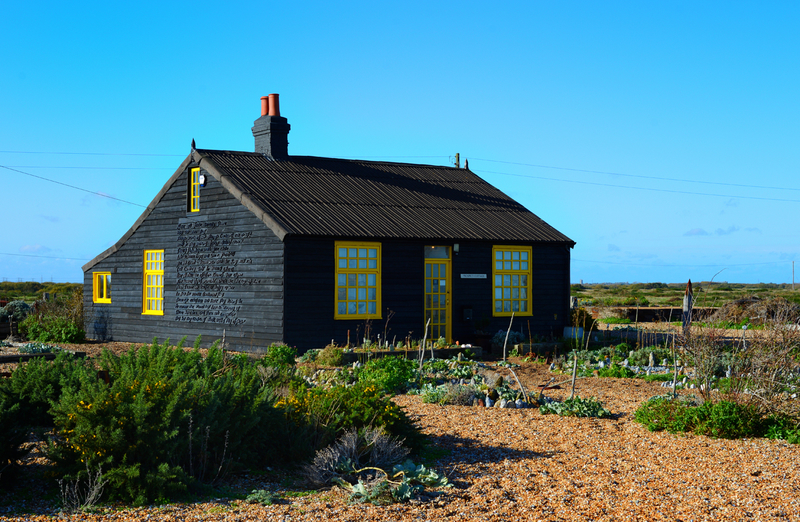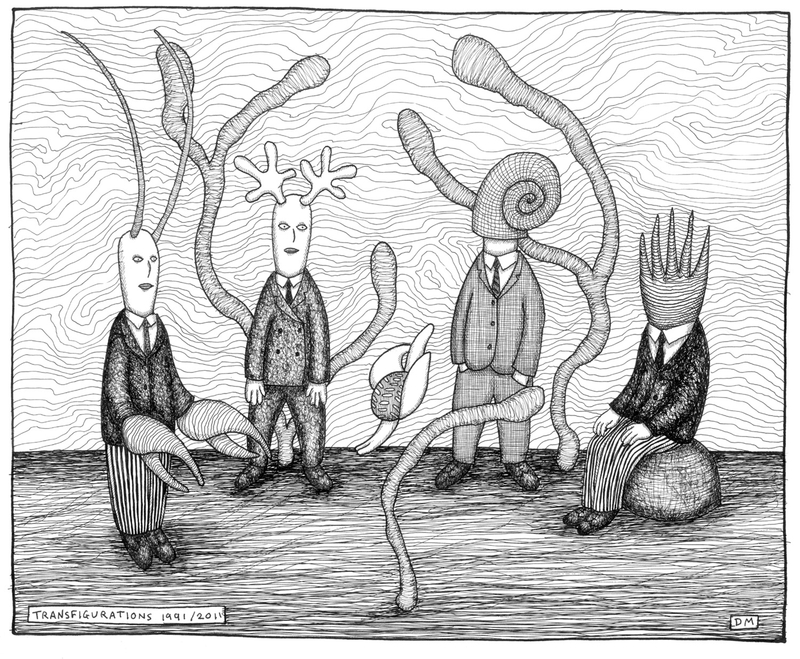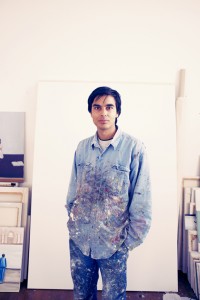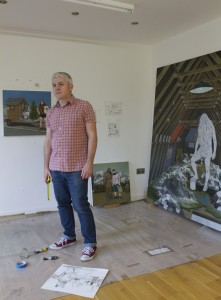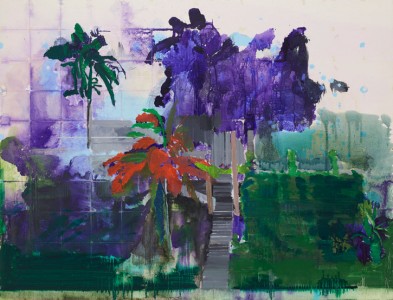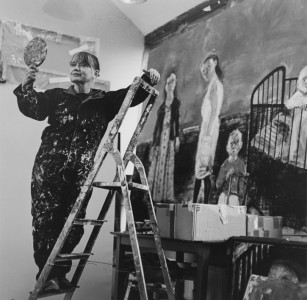Sean Williams
Huddersfield Art Gallery, 2014 
Robert Priseman – founder of The Priseman Seabrook Collections – talks to the Sheffield-based artist Sean Williams. The two discuss Sean's contemporary pointillist practice, going weak at the knees for
Robert Priseman: Your work seems to be highly realistic, yet on closer inspection appears strongly influenced by pointillism. Can you tell us more about
Sean Williams: My intention has always been to attempt to make something that looks a bit like a photograph at first glance but then becomes apparent that it is a painting. I aim to present scenes that are intriguing, beguiling and potential metaphors, and I feel this is best achieved within the context of realism, the 'truth' of a possible photograph. This has to be subtle.
The more I looked at painting the more fascinated I became by how an image is broken down into blobs and gestures, or pixels. I like how Seurat applied a scientific approach to paintings that are about life around him and reveal so much about humanity and what we might call 'the human condition'. I used to point in pure dots but it looked so mannered and soulless. I've adapted my technique but it's still very dotty. It's a means of including a number of
Robert: It is very interesting how you mention Seurat and being ‘old school’. It seems fair to say that your paintings don't look much like contemporary art. Does that concern you or is it exciting?
Sean: I’ve thought about this a lot. I love paintings by artists like Gainsborough and I go weak at the knees when I see anything by Aelbert Cuyp. I think there’s something relevant about Constable and Turner too – they have a significant emotional impact on me and I’d dearly love to be able to capture even a tiny bit of that. It’s hard to say exactly what it is and in some ways, I don’t want to know. Sometimes it just resonates and there’s no point in thinking too much about it. It’s not so much the
The next painting was of a number of mechanical diggers by a half-built marina. As the painting progressed, another possible layer of the meaning became more apparent: that the diggers might stand for something else. Unmanned they looked forlorn, if it is possible to ascribe human emotions to JCBs.
Robert: I like the way you talk about
Sean: Have you ever seen The Ideal City? It’s a haunting painting and feels like the opening scene of a Romero film, perhaps. It’s almost like an architect’s draft and it’s so silent. A friend said that some of my paintings look like the establishing shot of a film, or an episode of The Sopranos – sort of deadpan, and so tranquil that there might be the promise of action or an air of menace. I think if there were any people in the scene this stillness might be broken and the viewers might feel uneasy about imagining themselves entering the scene. I’ve risked putting a goat and some sheep in a couple of recent paintings to see what the effect might
Robert: Constable had a palette limited to seven
Sean: Part of the reason for initially using acrylic was its synthetic, unnatural
Robert: Do you think your paintings are more influenced by a surrealist agenda or a political standpoint?
Sean Williams
acrylic on board by Sean Williams (b.1966) 
Sean: I hope there’s a bit of both in there so I wouldn’t really want to make a strong claim for either camp. As soon as something is definitely one thing it stops having the potential to be another thing and I do like it if my work can be read differently depending on what individuals bring to it. I also like it if people are unsure about exactly what they are looking at because, in part, that reflects how unsure I am about most things!
I thought the candy-striped canopy in Celebrate These Good Times was slightly surreal. It was in the middle of nowhere and was crying out to be painted because it seemed so out of place and the high, unnatural
Lies About Nothing is partly intended as a comment on how green fields on the edges of conurbations very quickly become housing estates, and in the meantime, are these ugly hinterlands. It’s certainly not my intention to make a statement but to merely point towards instead.
Sean Williams
acrylic on board by Sean Williams (b.1966) 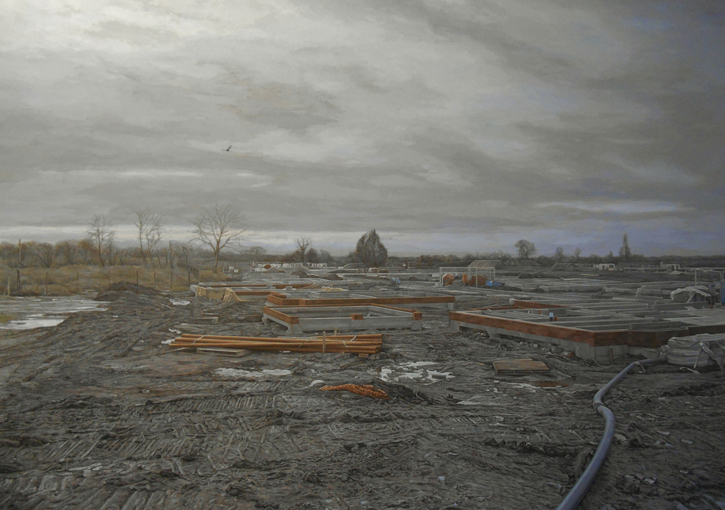
Robert: Yes, interestingly a lot of your paintings are of rather mundane, even quite boring looking, suburban places yet you seem to render something quite poetic, romantic even, in them. Would you describe yourself as a kind of romantic, an urban romantic, even?
Sean: Thank you. I wonder if by painting anything in a careful way it can look romantic or, at least, affectionate. That might just be my unconditional faith in painting! I work from my own photos and try to take them when the sunlight is low and the scene is at its most picturesque so that they do look as romantic as possible, and there is a suggestion of idyll. But this is the landscape we are building now.
Having spent so many hours in the National Gallery looking at Constable and Turner I want to have a go at more dynamic skies. I used to prefer flat, nondescript skies so that the focus was on other things in the painting, but the sky can make a subtle difference to the meaning. I do want to hint at romanticism but then for something else in the painting to disrupt that feeling – some sagging, melancholic balloons, weeds, or something more subtle. In Lies About Nothing, I enjoyed contrasting a moody sky with the mundane, muddy building site. The more I added to it, though, the more it began to look like Uccello’s battlefield and the sky helped to make a building site look ridiculously dramatic. Again, Dr Carr puts it much better than I can: 'More than presenting the physical geography of the landscape, it also lays the ground for the narrative, providing the psychological and emotional pitch for what follows. In some senses, the landscape of the establishing shot portrays the interiority of the characters in the film without representing them.'
Robert: If I may, I would like to end by returning to something you mentioned at the beginning: that you like to present scenes which are potential metaphors. What kind of metaphors are you aiming to create in your paintings, and what kind of truth do you think they are seeking out?
Sean Williams
acrylic on board by Sean Williams (b.1966) 
Sean: I think it was when I started making paintings including scaffolding that I realised that it had the capacity to symbolise something else. The scaffolding echoed the grid-lines on the canvas as I transposed the image and also, for me, symbolised the building of a painting. It is quite an odd thing to feature prominently in a painting and might, therefore, beg the question, 'Why, other than it signifying something (for the artist), has this scaffolding been painted, and painted so laboriously?' The next painting was of a number of mechanical diggers by a half-built marina. As the painting progressed, another possible layer of the meaning became more apparent: that the diggers might stand for something else. Unmanned they looked forlorn, if it is possible to ascribe human emotions to JCBs. I again felt they
I wonder if the possibility of a metaphor emerging is increased when my paintings are seen in a small group. Some, as you mentioned earlier, are mundane and with little to get your teeth into. Others present objects and motifs, not in a surrealist, de Chirico-way, which could possibly be taken as symbolic. In this regard, the paintings play off each other. The absence in one heightens the presence in another. I don’t think I’m establishing a code to be cracked but do aim to encourage individual narrative by using familiar scenes and motifs with which we each have our own relationship.
Robert: Thank
Robert Priseman, artist, collector, writer, curator and publisher
